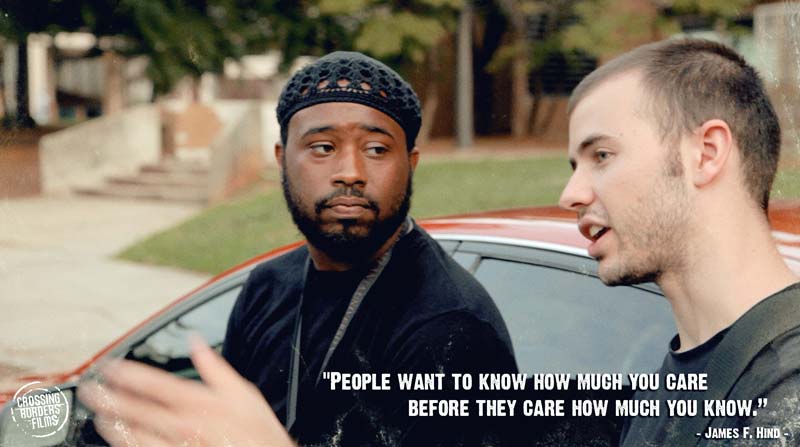
Use the emotional and timely story of the film American Textures to create constructive dialogues in your community.
Many of us desire positive interracial connections and agree that dialogue is urgently needed, but don’t know how to start or experience fear of saying the wrong thing. How can we actually initiate interracial dialogue that does not increase hurt, but deepens understanding?
This toolkit supports individuals to take courage and practice honest conversations on race in order to grow mutual understanding and deepen skills such as active listening, empathy, and social awareness. We provide here practical tools that support you to organise small group discussions, deepen connections and strengthen a Culture of Dialogue at your home, school or community.
Group size: To support deep and honest dialogue start initially with small groups of 2-12 diverse individuals.
Time needed: The three group activities take about 3 hours in total: Preparation (30 min), Film Screening and Dialogue (2 hrs), Integration (30 min).
Take the following three steps to host a screening:
American Textures is a powerful and compelling documentary that reveals the importance of more honest discourse about race in America. The lives and stories of the young people masterfully presented in this film offer both hope and impetus for more of us to join the conversation.Bryan Stevenson, Founder, Equal Justice Institute
Contact us to explore how American Textures and CBE resources can support your dialogues.
Testimonials
American Textures gives us a road map to start the kind of dialogue that leads to genuine understanding and respect. The path is not easy. But it is clear.Mark Bauman, Executive Vice President, National Geographic TV
The dialogue and honesty in the film American Textures compels viewers to be transparent, self-reflective and critically thinking citizens about racial issues agitating Americans. The communications that happened as a result were transformative for three UNG campuses and the accompanying diversity resources permit a more robust dialogue on race in the future.Sheila Caldwell, Chief Diversity Officer, University of North Georgia
As a white person watching American Textures, I felt like Kenya’s honesty and vulnerability took me to a new level of understanding. Specifically, I came to understand on a new level how white people’s desire to not feel upset or shame or any other negative feelings during discussions of race is part of white privilege, that our autopilot reaction that the anger being expressed is “about us” stems from our preferring not to feel stressed or upset. The fact that not feeling negative emotions is our norm is a part of our privilege. I realized because of Kenya that being invited into that painful space is actually a gift more than an indictment, even though we are not innocent. While I might have been able to describe something like this in an abstract way before the film, after the film I understood it in a fuller, emotional way. It really was a watershed moment for me .Jillinda Weaver, Ph.D., Director of YTI IMPACT, Emory University


